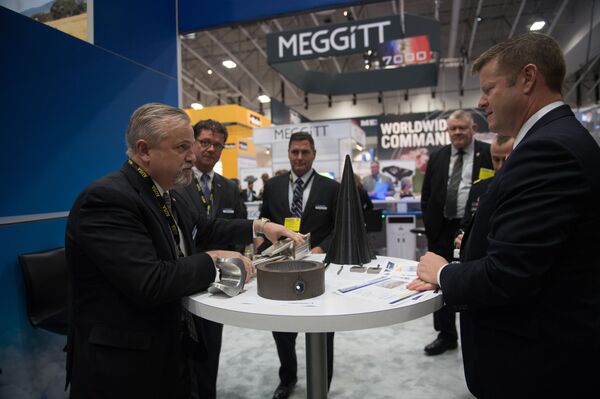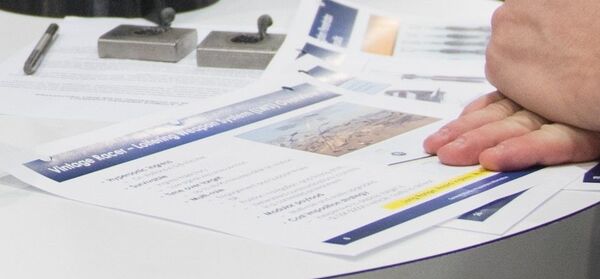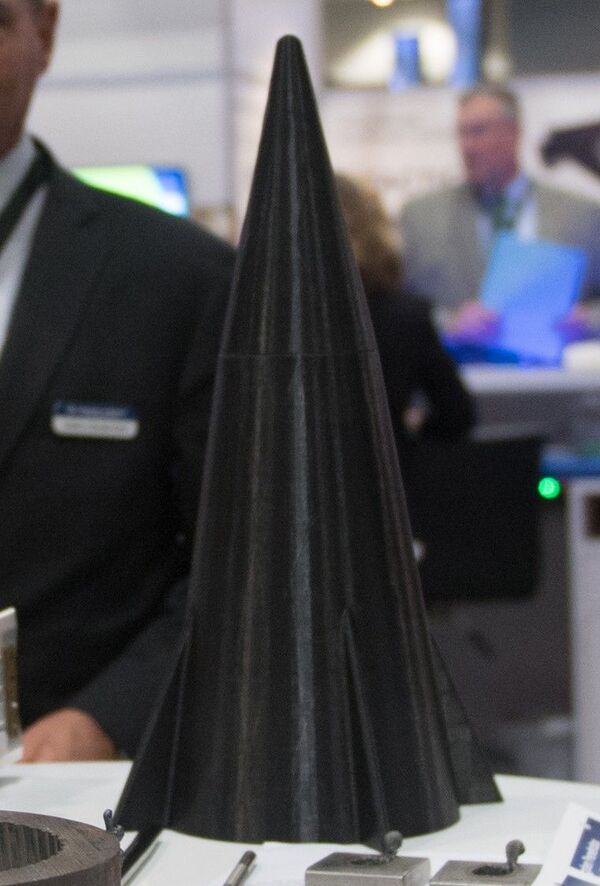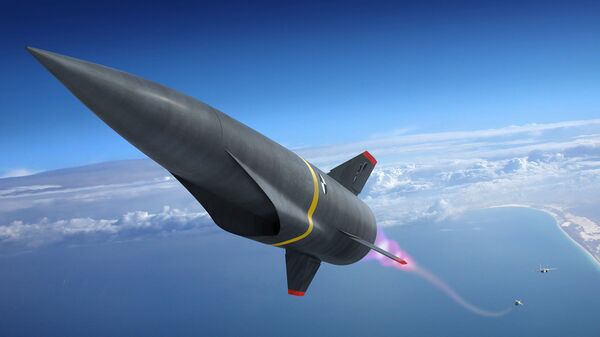Sometimes, we take photos and don’t always realize everything that’s captured in the image, right? That was the case when McCarthy, the US Army’s most-senior civilian figure, uploaded some photos last October of the Association of the US Army convention, an annual meet-and-greet that bills itself as the “largest landpower exposition and professional development forum in North America.”
In the photo, the Army secretary stands with an unidentified attendee at a table covered by objects, one of which appears to be a model of the Long-Range Hypersonic Weapon (LRHW), a Mach 5-capable missile being built by industry giant Lockheed Martin.

According to Lockheed, the LRHW is specifically designed to be ultra-maneuverable and fired by road-mobile launchers, but as Aviation Week discovered, it may also be intended to strike enemy mobile targets as well.
Steve Trimble at Aviation Week rotated and magnified the handout in front of McCarthy, which gives some telling details about the weapon.
Trimble noted the handout headline reads “Vintage Racer - Loitering Weapon System (LWS) Overview,” and that it has six bullet points: “Hypersonic Ingress”; “Survivable”; “Time Over Target”; “Multi-role”; “Modular payload”; and “Cost Imposition Strategy.” There are other items in smaller type that are not legible from the photo. At the bottom, a partially obscured tagline reads “Long Range, Rapid Ingress.”


The Vintage Racer would supposedly be used for striking mobile targets with the ultra-fast projectiles, which can be fired from thousands of miles away. Trimble later explained on Twitter how the purported weapon works, based on his understanding: “imagine a hypersonic projectile that dispenses (somehow) a loitering, multi-role air system over a target area. That’s what I think Vintage Racer is.”
In other words, the weapon would use its super speed to zip past enemy air defense perimeters, then deploy either some kind of sub-munitions that would be able to seek their own targets, or some kind of spotter reconnaissance device to locate the moved targets and relay targeting information back to the launch site for subsequent weapons to zero in on.
According to the journalist, the only mention of a “Vintage Racer” weapon is from a budgetary document from February 2020, which touts it as a “recent success story.”
OMG, Vintage Racer has been flight tested successfully and transitioned to the Army for follow-on development. This thing is actually real, not just a briefing slide! https://t.co/Mp2zEZao0H https://t.co/fzpvgSsWdI pic.twitter.com/ILBhN05tVU
— Steve Trimble (@TheDEWLine) June 7, 2020
“Vintage Racer matured an advanced capability to prosecute targets of interest. The project successfully validated aerodynamic design with wind tunnel testing and integrated a guidance subsystem for targeted kinetic effects before culminating in a FY [fiscal year] 2019 flight test. Documentation and prototype technologies transitioned to the US Army for additional development and follow-on acquisition activities,” the report states.
A New Arms Race
The US currently has no operational hypersonic weapons system and continues to lag behind other powers, such as Russia and China. Moscow has two such weapons: the Avangard hypersonic glide vehicle and Kinzhal air-launched ballistic missile. A third weapon, the Tsirkon submarine-launched hypersonic missile, was tested earlier this year.
China has also shown off at least two hypersonic weapons: the Dongfeng 100 and DF-ZF, which the Pentagon calls the WU-14.
China has also let slip admissions about its own weapons programs recently. While Beijing has carefully avoided explicitly confirming that the JL-3 submarine-launched ballistic missile (SLBM) exists, only ever having made vague statements about missile tests, the engineers behind the missile were recently nominated for China’s top science prize, the National Award for Excellence in Innovation. The missile purportedly has a range of 7,450 miles, giving it the ability to reach the United States if fired off the Chinese coast.

